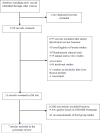Relationship between Diet and Non-alcoholic Fatty Liver Disease: A Review Article
- PMID: 28894701
- PMCID: PMC5575379
Relationship between Diet and Non-alcoholic Fatty Liver Disease: A Review Article
Abstract
Background: Diet plays a key role in the development of non-alcoholic fatty liver disease (NAFLD). The aim of this study was to review systematically observational studies available regarding the relationship between food intakes and NAFLD.
Methods: We searched Scopus, PubMed, and Cochrane Library databases to identify English observational studies on food groups, dietary patterns, and NAFLD. Cross-sectional, case-control and cohort studies were selected and then duplication, topic, type of study, study population, variables examined and quality of data reporting of the articles were evaluated.
Results: We identified 2128 studies in the initial search, of which 33 were reviewed in full text and 7 articles were included in this systematic review. Intakes of red meat, fats, and sweets were high whereas consumption of whole grains, fruits and vegetables were less in NAFLD patients. Moreover, there was a positive association between the Western dietary pattern and the risk of NAFLD, while adherence to the Mediterranean diet was significantly associated with the severity of hepatic steatosis.
Conclusion: Generally, different food group intakes and dietary patterns are associated with the progression of NAFLD and its risk factors. Because of the many limitations of available studies reviewed on this topic, more prospective studies are suggested.
Keywords: Dietary patterns; Food groups; Non-alcoholic fatty liver disease.
Conflict of interest statement
Conflict of interest All authors declare no conflicts of interest.
Figures


References
-
- Loomba R, Cortez-Pinto H. (2015). Exercise and improvement of NAFLD: Practical recommendations. J Hepatol, 63:10–2. - PubMed
Publication types
LinkOut - more resources
Full Text Sources
Medical
